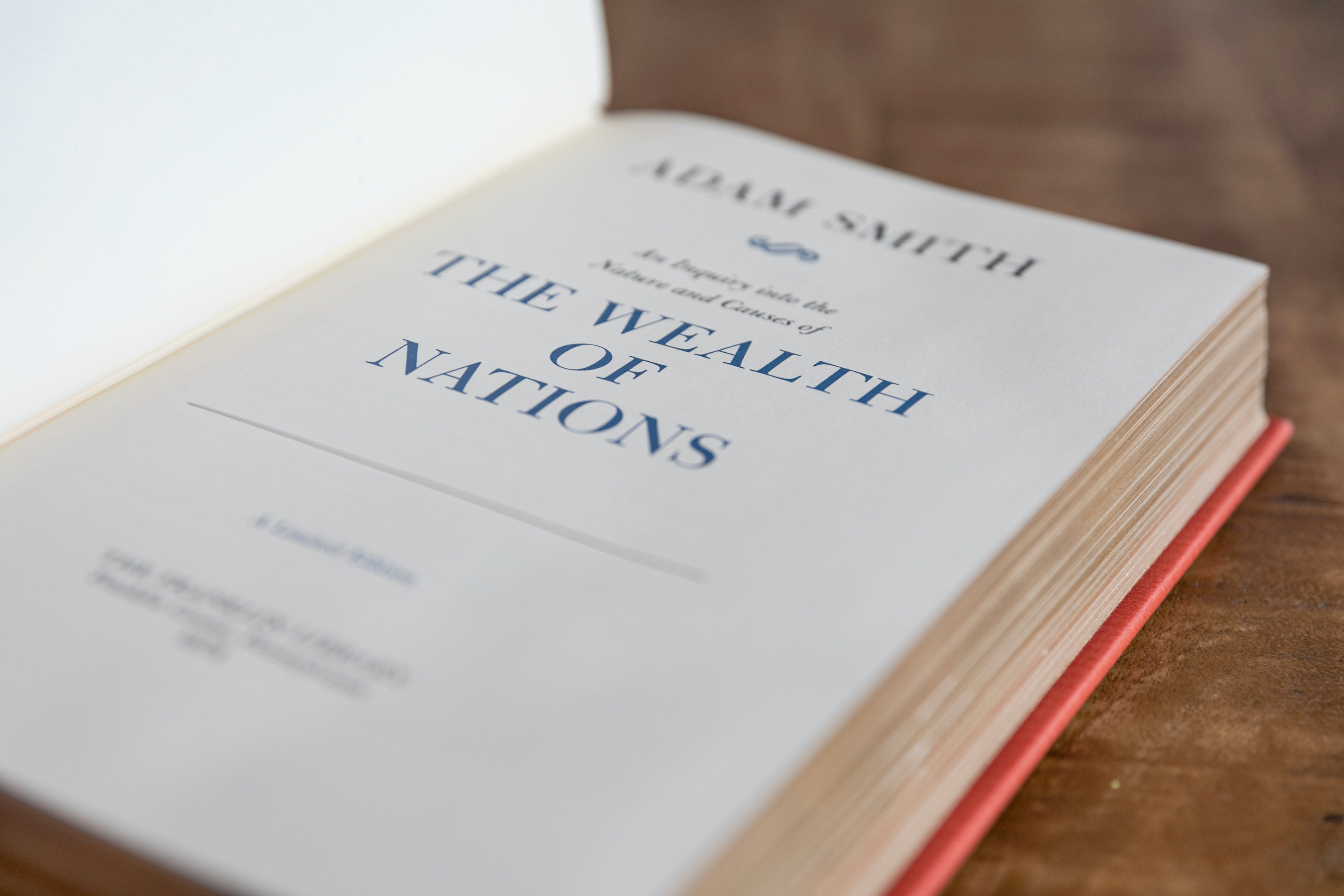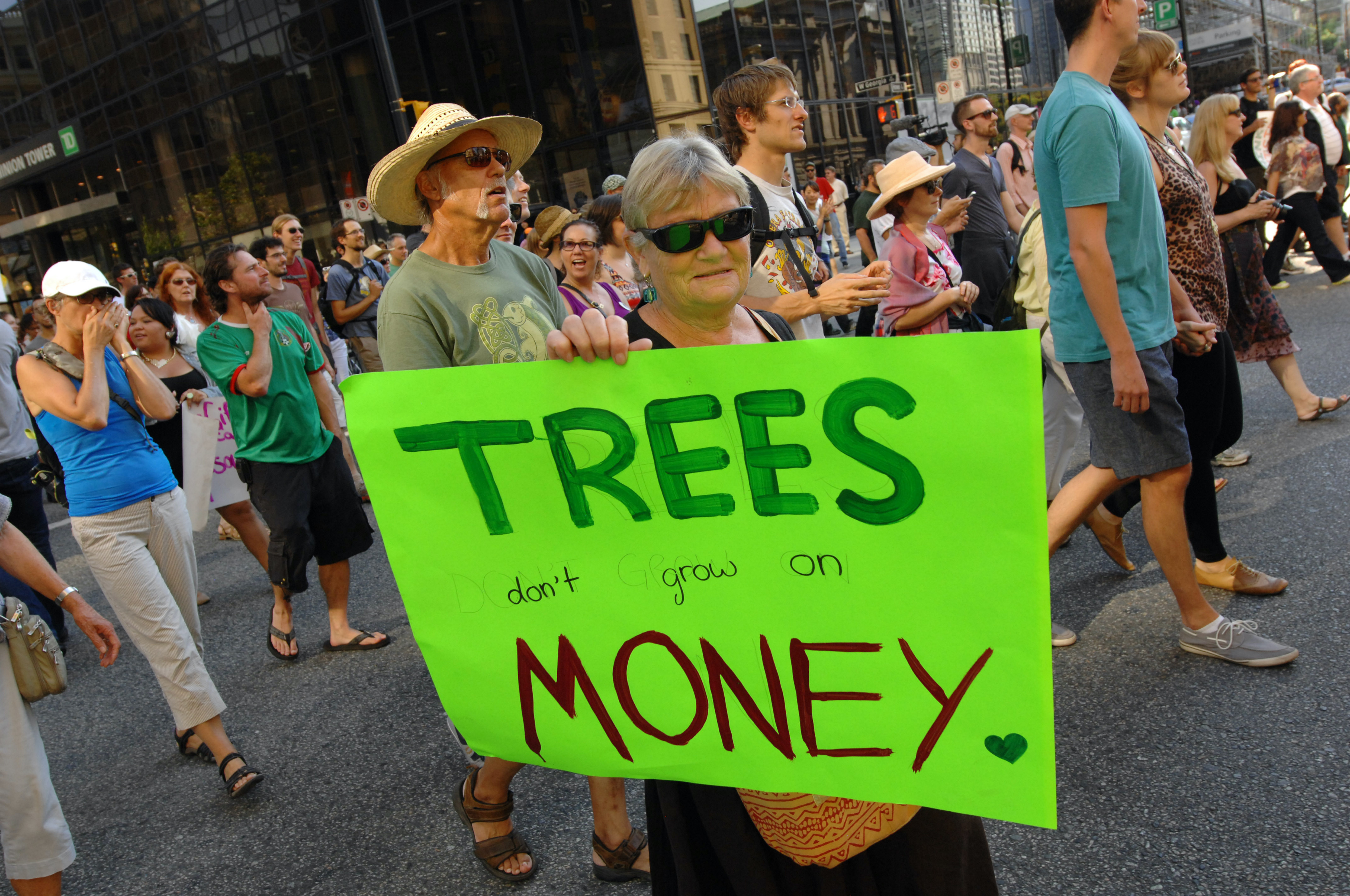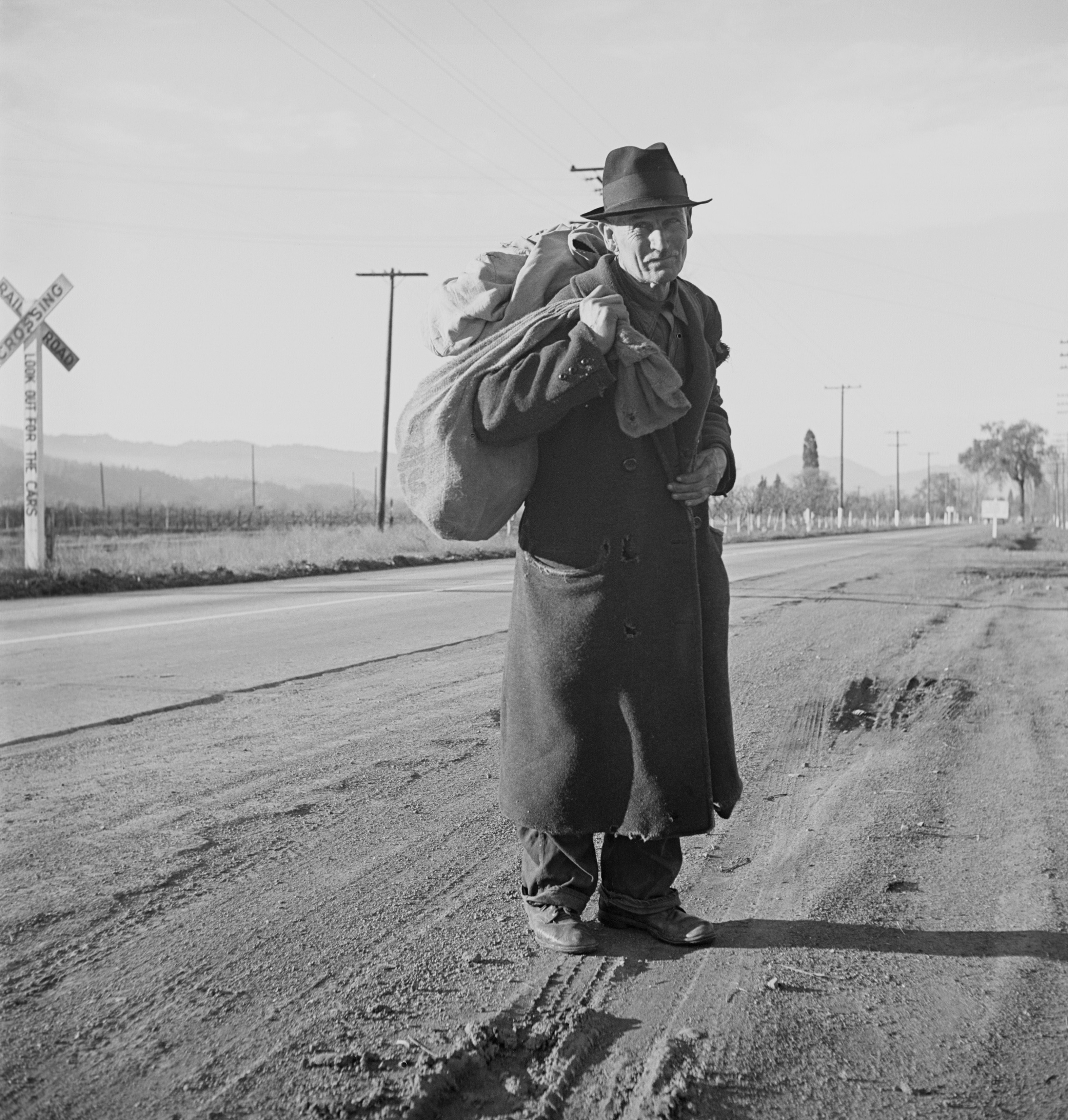In a lot of ways, the institutions that we interact with on a daily basis embed values that we don’t necessarily think about. When we think about something like the market and the ways in which people come to hold the view that the market or capitalist institution is good for society, what is actually being represented is a long history of rhetoric and sets of moral values that have defined the way that we think and talk about markets.
Of course, everyone thinks about Adam Smith and the invisible hand. The basic idea of the invisible hand is that there is this hand, working in the background, that makes it so that whenever I act in my own individualistic, rational self-interest, when I look at a market and take prices as given, and buy things and sell things, that if the system is in an equilibrium, everyone is as best off as they could possibly be. So, the invisible hand idea is that there’s this inner working behind the scenes that creates an equilibrium where everyone is doing the best that they possibly can simply by thinking about themselves.
In the 1950s, Kenneth Arrow achieved the amazing feat of taking Adam Smith’s idea of the invisible hand and writing it into mathematics.
Numbers lend legitimacy
What’s important to remember is that these theorems that Arrow then proved came to look like truth, because they were written in fancy mathematics. They were really hard for the ordinary person to comprehend. At the same time, these theorems rest on a number of assumptions about how people make their choices – people act in their rational self-interest and they maximise something called "utility". They also make assumptions on how the producer side of an economy – firms, technologies and the state – produce the goods that consumers end up consuming in a marketplace.
So, through these theorems, the invisible hand idea came to hold a different kind of weight. It was no longer just a pretty metaphor, but had this air of legitimacy that felt harder for people to argue with.
Models influence perception
This type of market logic was extremely powerful in underwriting many of the economic institutions that followed in the second half of the 20th century. In a lot of ways, we can see that these moral values hidden inside these welfare theorems are represented in the institutions that were built on those theorems.
What’s weird is that, over time, there’s a process that goes back and forth between how people see themselves and how they are being told to see themselves in society. There’s a symbiosis between the ways that people talk about, and experience, collective life.
Even if humans are not necessarily always rational and able to maximise their own self-interest, we come to see ourselves that way when we’re living in a society that asks us to see ourselves that way. That can have extraordinary consequences, both good and bad, but often we don’t see where they come from.
In 2007, I was just becoming aware of the climate crisis, which is the consequence of individualistic, rational self-interested thinking that couldn’t have been foreseen by something like the invisible hand.
Climate change is outside of the model that Arrow came up with and formalised through Smith’s idea of the invisible hand, and so that creates a dilemma where so much of the discourse that we engage in about climate change and the economy tells us that we have a dilemma: we can have one or the other. We can have a capitalist society where everyone is doing well and participating in the economy and buying things or we can have climate change: a catastrophe. We can’t mitigate climate change while having a healthy capitalist economy.
Now, this is something that’s presented to us so often as a fact, as a dilemma, as a paradox – and that’s a disaster. It makes our chances of survival as society, as we know it, look very grim, but the fact is, this disaster dilemma, as you might call it, is actually embedded within a particular way of looking at the world.
Missing pieces
I would say the most problematic assumptions are first, this idea that there are no externalities, that my individual rational self-interest has no effect on other people; and how that influences and makes it impossible to think about climate change. It also enforces this idea that the goal of life is to do something for yourself – and that, frankly, is an ideology.
We usually like to, at least in liberal democracies, let people decide the meaning of life for themselves. However, a lot of the time, when economists propose this idea that rational self-interest for an individual is the governing principle of one’s life, it often ends up generating these institutions that make us think that that’s the only way we should be pursuing our lives.
We see a lot of differences in different countries. I’m from the US and one example of how this individualistic mindset influences our policies can be seen in the way that the US approaches welfare programmes or social safety net spending.
The Earned Income Tax Credit
The United States tends to like programmes like the Earned Income Tax Credit, which is a credit that is on earned income. Rather than saying the people at the bottom of the distribution, the most needy people in the nation, can have some money in order to live, US policy says that as long as you work X amount of hours, they will give you a credit off your taxes.
This implies that an individual needs to be engaging in the market economy and adding their labour to society in a specific way in order to be worthy of government spending. In many ways, this is a perfect enactment of economic theory, because economic theory would tell us: if you give people money without requiring them to work, then in some sense you are not maximising the potential of society. Therefore, this deeply individualistic idea that starts as an innocuous, highly technical mathematical assumption in economic theory comes to define how we talk about policies in the political sphere and in our governments and influences whether people see a policy as good or bad.
I get most excited about ideas that don’t necessarily fall into the political spectrum that we normally think about, but somewhere in between; those that aren’t market-focused or government-focused, those that are taken from the good sides of market-based societies or from the right and combined with ideas that come from the left. I think that this is possible and really necessary.
In the years following previous crises, there were often new ideas burgeoning that completely rejected the dichotomies in the ways of thinking that preceded them. For example, in the wake of the Great Depression, there was a pretty sizable movement of people who wanted to move back to the land. It was an agrarian movement primarily in the United States, and it came along with an economic philosophy that has sort of been forgotten but has a lot of lessons to teach us in that it focused on communities not only as sites of economic production but also of care. For me, it’s all about the balance between organisations on the individual level that privilege an individual and organisations that reward and structure collectives of different sizes.


